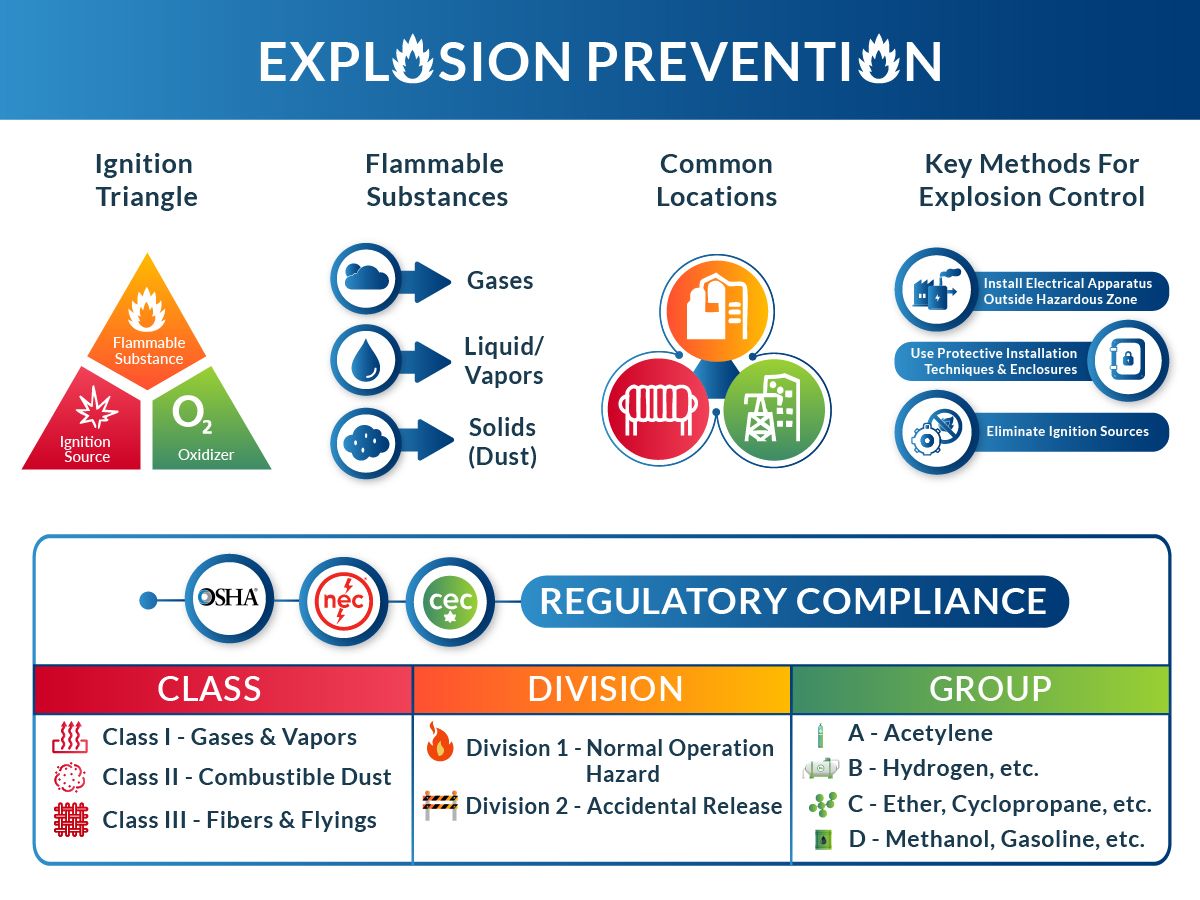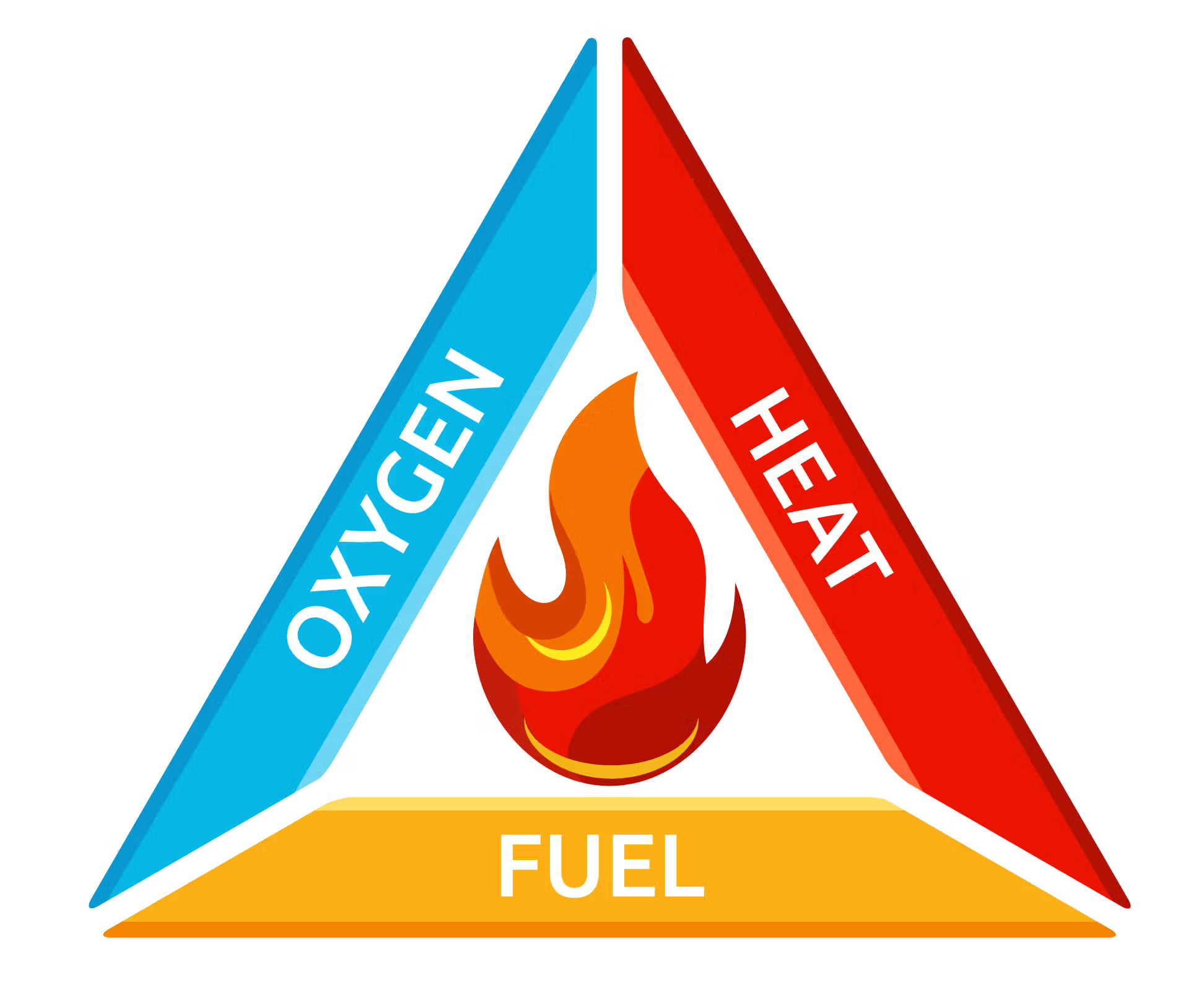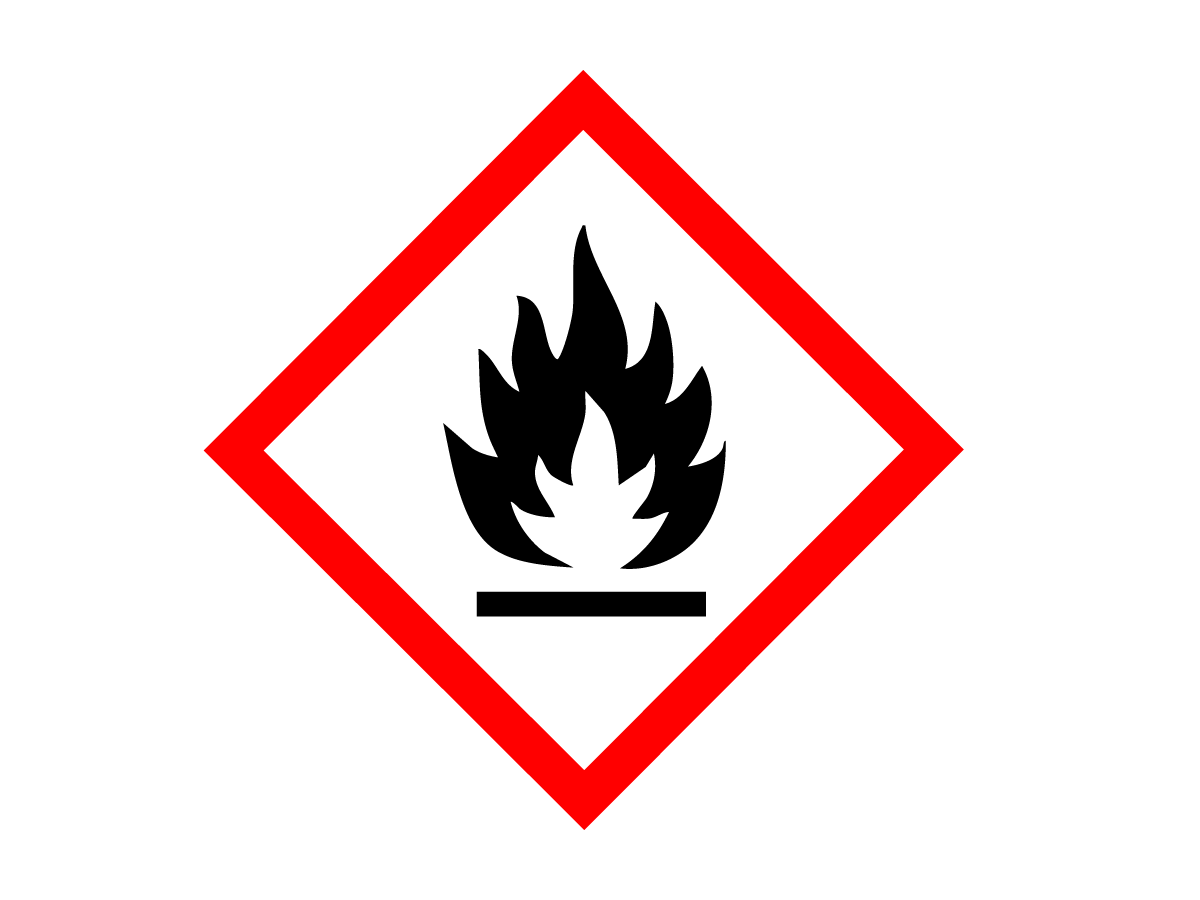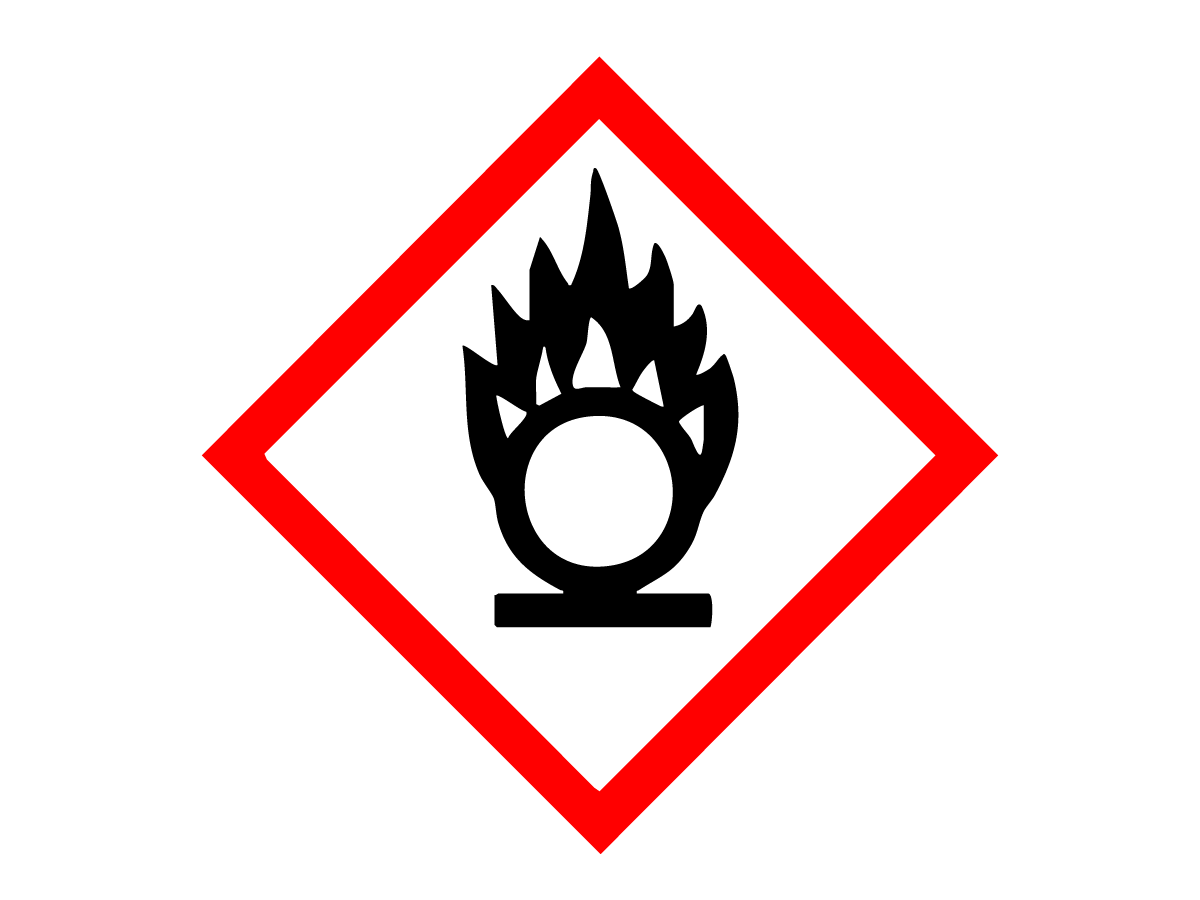
Introduction
Industrial plants face significant fire and explosion risks, making compliance with safety codes essential. Regulatory bodies such as OSHA, the National Electrical Code (NEC), and the Canadian Electrical Code (CEC) define hazardous locations as areas where flammable gases, vapors, combustible dust, or ignitable fibers are present in sufficient quantities to pose an explosion risk. Specialized electrical equipment and installation techniques are required in these environments to prevent ignition sources.
Hazardous locations are common in industries such as chemical processing, petrochemicals, mining, and bio-gas utilization, where flammable substances like methane and coal dust cannot be entirely eliminated. Explosion-protected equipment, including electrical instrumentation, control devices, push buttons, and pilot lights, ensures safe operation. Beyond traditional applications in oil and gas, explosion-protected technology is increasingly used in sectors such as waste management and landfill operations.
Understanding hazardous location classifications and risks is critical for selecting, installing, and operating electrical equipment safely, ensuring compliance and workplace safety.
Understanding Explosions and Prevention
An explosion is a sudden reaction involving rapid physical or chemical decay, leading to a sharp increase in temperature and pressure. Three fundamental elements must be present for an explosion to occur:
- Flammable Substance: Sufficient gas, vapor, liquid, or dust must be available to form an ignitable mixture.
- Oxidizer: Oxygen from atmospheric air must be present in the right proportion to sustain combustion.
- Ignition Source: A heat source, spark, or other energy input must trigger the reaction.
These three elements form the “Ignition Triangle.” Removing any one of them prevents an explosion.

Flammable Substances and Their Risks
Flammable substances fall into three main categories:
- Flammable Gases: Hydrogen and hydrocarbons ignite easily in oxygen.
- Flammable Liquids/Vapors: Hydrocarbons like ether, acetone, and lighter fluids evaporate at room temperature, forming explosive atmospheres. The flash point (the lowest temperature at which a liquid produces ignitable vapors) determines hazard levels.
- Flammable Solids: Dust, fibers, and flyings accumulate over time, increasing dust explosion risks. A small initial explosion can dislodge more dust, triggering larger secondary explosions.
Each flammable gas or vapor has upper and lower flammability limits, defining the concentration range in which ignition can occur. Outside these limits, mixtures are too lean or too rich to sustain combustion.

The Role of the Oxidizer
The primary oxidizer in hazardous environments is oxygen from the air. Explosion severity depends on the oxygen-to-fuel ratio. Special containment measures are required in oxygen-enriched environments, as traditional explosion protection may be insufficient.

Ignition Sources and Prevention
The energy required for ignition depends on the concentration, explosive properties, and volume of the hazardous material. Common sources include:
- Open flames, lightning, and electrical sparks.
- Hot surfaces from electrical components exceeding the Auto-Ignition Temperature (AIT).
- Sparks from friction, impact, or electrical arcs.
- Chemical reactions or biological processes leading to spontaneous combustion.
Explosion-proof electrical equipment is designed to mitigate these risks through controlled design, rigorous testing, and certification.
Common Locations for Explosions
Industries handling flammable gases, liquids, and solids face higher explosion risks, including:
- Chemical plants, refineries, and paint shops.
- Mills, flour silos, and cleaning facilities.
- Tanks and loading stations for flammable materials.
Understanding these risks enables industries to implement necessary prevention measures and ensure compliance with safety regulations.
Controlling Explosions in Hazardous Environments
Absolute safety from explosions is not achievable, but risks can be minimized by eliminating one of the three elements of the ignition triangle. Since oxygen and flammable materials are often unavoidable, explosion prevention primarily focuses on eliminating ignition sources to prevent uncontrolled explosions.
Key methods for explosion control include:
- Locating Electrical Equipment Outside Hazardous Areas: Whenever possible, electrical apparatus should be installed outside classified hazardous zones.
- Protective Installation Techniques & Enclosures: When relocation is impractical, specialized enclosures isolate electrical components from explosive atmospheres.
- Eliminating Ignition Sources: Explosion-proof or intrinsically safe equipment ensures potential ignition sources are controlled or eliminated.
Understanding Class/Division Systems
In North America, explosion protection primarily follows the Class/Division system. Proper classification and equipment selection are essential for ensuring safety and compliance.
Area Classification in Hazardous Locations
Facilities assess hazardous material presence and likelihood to select appropriate electrical equipment and installation practices. The Class, Division, and Group System, defined by NFPA 70, NEC, and CEC standards, categorizes hazardous conditions.
- Class Definition:
- Class I: Flammable gases and vapors.
- Class II: Combustible dust.
- Class III: Ignitable fibers or flyings.
This paper focuses primarily on Class I locations, where flammable gases or vapors are present.
- Division Definition:
- Division 1: Hazardous substances exist under normal operating conditions or due to frequent maintenance or equipment failure.
- Division 2: Hazardous substances are typically contained within closed systems but may escape due to accidental rupture or breakdown.
Division 1 areas require more stringent installation and conduit requirements than Division 2.
- Group Definition:
- Group A: Acetylene.
- Group B: Hydrogen, Butadiene, Ethylene Oxide, Propylene Oxide (highly explosive gases).
- Group C: Ethylene, Cyclopropane, Ethyl Ether.
- Group D: Propane, Acetone, Ammonia, Gasoline, Methanol, Natural Gas (common flammable gases).
These classifications ensure proper selection of electrical equipment to prevent explosions. A thorough site assessment by local inspection authorities is necessary to determine the specific Class, Division, and Group designation for a location.
Summary
Ensuring safety in hazardous locations requires a comprehensive understanding of explosion risks, proper equipment selection, and strict adherence to classification standards. By recognizing the ignition triangle and implementing explosion prevention methods such as intrinsically safe designs, explosion-proof enclosures, and pressurization techniques, industries can significantly reduce the likelihood of ignition. The NEC/CEC classification system provides a structured framework for selecting certified electrical equipment in hazardous environments.
Proper equipment marking and labeling ensure compliance with regulatory standards, enabling industries to mitigate risks effectively. By integrating engineering controls, specialized equipment, and preventive measures, facilities can enhance operational safety, protect personnel and assets, and maintain compliance with hazardous location regulations.
----------------------------------------
Disclaimer:
The content provided is intended solely for general information purposes and is provided with the understanding that the authors and publishers are not herein engaged in rendering engineering or other professional advice or services. The practice of engineering is driven by site-specific circumstances unique to each project. Consequently, any use of this information should be done only in consultation with a qualified and licensed professional who can take into account all relevant factors and desired outcomes. The information was posted with reasonable care and attention. However, it is possible that some information is incomplete, incorrect, or inapplicable to particular circumstances or conditions. We do not accept liability for direct or indirect losses resulting from using, relying or acting upon information in this article.
ISO 9001:2015
Certified
17+ Million Product
Configurations
Lifetime
Warranty
Guaranteed
Same-Day Shipping
Advantage Pricing
Save Up To 40%
c3controls Headquarters, USA
664 State Avenue
Beaver, PA 15009
